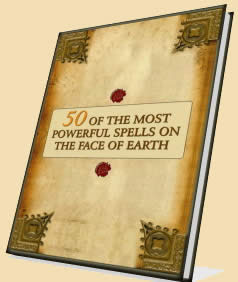
VOODOO is a way of life. For those it touches, it is impossible to define. Many would simply state, "Voodoo is a beautiful religion". But, while true it is far more than that. Voodoo is religion, culture, heritage, and philosophy. It is also art, dance, language, medicine, music, justice, power, storytelling & ritual.
The Voodoo is a way of looking at and dealing with life. It heals and destroys - Is both good and bad; simple in concept and complex in practice. Voodoo is seen in daily life and every detail of life has meaning in Voodoo. The Voodoo is open to all yet holds many secrets & mysteries to those who are uninitiated.
To fully understand Haitian Voodoo you must study the people, the language and culture of Haiti. You must realize the history of Haiti's children and the stories of their Spirits. You must examine Voodoo at its roots in Africa and how it came to and changed on the island of Hispaniola. Even then you will not fully understand Haitian Voodoo - You must immerse yourself in it. Voodoo must be lived.
A HISTORY OF VOODOO IN HAITI
VOODOO history belongs to the millions of people, whose ancestors were brought from Africa to the Caribbean in bondage. Although its essence originated in distinct regions of Africa long before the Europeans started the slave trade, Haitian Voodoo, as we know it today, was born in Haiti during the European colonization of Hispaniola. Ironically, it was the forced immigration of African slaves from different tribes that provided the circumstances for its development. 1 These stories of African roots, enslavement and hard fought freedom comprise the history of Voodoo.
Christopher Columbus planted the seeds of Voodoo when he landed in Hispaniola ("Little Spain") in 1492. Within two decades the Spanish had all but eradicated the native inhabitants, the Taino (Arawak) Indians in an attempt to force them into slavery. 2 The "native peoples unable to withstand enforced labor and European diseases, died in appalling numbers, and the use of European indentured servants proved to be uneconomical." This set up the cycle of slave trade with West and Central Africa that began in 1517. 3
In 1697 the French acquired the western third of the island of Hispaniola. Over the next century a plantation economy developed and African slave labor made Saint-Domingue (Haiti) the wealthiest colony in all the world. The prime source of this wealth was sugar, but coffee, cotton and indigo were also grown and exported. Slavery on these Haitian plantations was so brutal that the Africans only survived an average of ten years, and the workforce had to be continually replenished with new arrivals. In the course of a century, the slave population swelled from a few thousand to nearly half a million. This growing slave population became very diverse and many African nations, languages and belief systems were represented within its people.
It is during this period of French colonization that much of Voodoo's structure (as we currently know it) developed. In an attempt to keep their beliefs alive, the Africans began to not only invoke their own Spirits but to practice the rites of other African nations. Colonists thought that by separating tribe members individuals would not come together as a community. However, in the misery of slavery, the transplanted Africans found a common thread in their faith. These mixed, intermingled religions are the basis of Voodoo. Those nations most prevalent are the Fon of the ancient West African kingdom of the Dahomey, now Benin & Togo; the Yoruba of what is now Nigeria and parts of Benin; and the BaKongo from the Central African nations of Angola and the Democratic Republic of Kongo. Also evident were the Nago, the Ibo, Senegalese, Haussar, Caplaou, Mondungue, Mandinge, Libyan, Ethiopian, and the Malgache nations. 4
Christianity and European influence also played a role (to some extent) in the development of Voodoo. During the French occupation of Haiti, the rulers of France answered to the Roman Catholic Church, which recognized African slaves as human beings. A set of laws called the Code Noir or Black Codes spelled out not only how slaves would be treated, but stipulated that all should be baptized and instructed in the Catholic Faith. 5 Over time, the Africans began using Catholicism as a means to mask their religious practices. This is how the syncretism or perceived assimilation of African deities with Catholic saints developed. The Africans incorporated Catholic prayers into their services and used images of Catholic Saints as representations of their Spirits.
The Voodoo went underground to some extent, but it grew in popularity, in large measure because of the oppression. By the early 1950s the Catholic Church shut down this war, got rid of the warmonger priests and made their peace with Voodoo. African drums and melodies were even incorporated into Catholic church services. 10
The Voodoo was tested as late as the 1970s when evangelical Protestant missionaries flocked to Haiti. These missionaries were bitter enemies of Voodoo and deemed it "Satanism". Many of these people claimed that Haiti's misery is because she is being punished by God for the sins of her Voodoo serviteurs.
As a new, shaky government develops in Haiti, Voodoo is again emerging from the underground and being accepted as an established "religion". The Constitution of 1987 guarantees the protection of all religious practices, including Voodoo.
It is this story of how African culture crossed, survived and creatively adapted itself to a new land that makes up the history of Voodoo. It is also the lessons of Haitian history that make up Voodoo culture - as Haitians have become accustomed to revolution, poverty, oppression; promise & betrayal by its own political advocates.
Suggested reading (pdf e-books):
Aleister Crowley - Intro MagickEd Richardson - Seidr Magic
Tags: magic spells and chants love spells rituals fast love spells white magic herbs black magic candles free chanting love spells magic spells chants famous black masons marriage love spells




